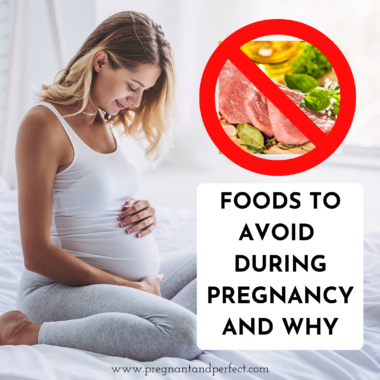There’s a joke, “Every month has at least 29 days, except the last month of pregnancy. It has 1265 days“. If you are in your 9th month, you probably agree with this and have thought about ways to naturally induce labor.
The final stages of pregnancy, those final moments leading up to your baby’s birth can be intriguing as the long-awaited moment draws near. It is no surprise, though, because the journey of pregnancy is incomparable to many.
Years of medical practice, research, and technological development has seen the almost-accurate prediction of expecting mother’s due date. However, as with many things beyond our grasp, births may sometimes happen within a pre- or post-two-week period against the earlier presumed date. Yet, it is not uncommon to find that many labors are induced.
Labor induction refers to the stimulation of the uterus to achieve contractions and enhance labour (before its own time) and ultimately, the birth of a baby. Inducing labour happens for several reasons, the most common being health concerns for the mother and baby’s safety. Other reasons may include placental abruption or pre-existing medical conditions such as obesity or kidney disease.
While it is best advised that women let nature take its course, inducing labor may be an option in some situations. For instance, pregnancies that have surpassed the 40-week mark are most often induced. In light of this, natural labor induction methods have become popular in the world of maternity.
Related: Pooping During Labor: What You Should Know
So, in our true fashion as your plug for all things that make motherhood a tad bit easier (wink!), we present to you 5 awesome natural labor induction methods:
1. Exercise: Ever heard the phrase ‘The Wonder Machine’ when people are referring to the human body? If anything, that much is true about every one of us. How the human body functions and all parts work seamlessly is a miracle that even science has adequately understood. Did you know that something as ‘simple’ as a long walk can exert pressure on the pelvic floor enough to prime the cervix for labor? Even if it doesn’t work, it still does your body a great deal of good ahead of the delivery proper. You’re welcome.
2. Nipple stimulation: A little massage of your nipples will not only be pleasing to you but will also encourage the secretion of oxytocin which helps to enhance contractions. However, this may cause protracted labor which can lead to low fetal heart rate.
3. Acupressure and/or Acupuncture: Acupuncture and acupressure are two age-old practices that involve putting pressure and inserting thin needles respectively into specific locations on the body. When these parts of the body, known as acupoints are pressured, they can stimulate uterine activity and nudge the baby into an early entrance.
4. Castor Oil: Although now more popular for hair care, castor oil is also a laxative that stimulates the bowels. This causes spasms – and subsequently contractions – in the uterus. However, a high intake of castor oil can lead to a bad case of diarrhea, so if you must, take only a spoonful.
Related: 7 Things You Can Do During Pregnancy To Prepare For Birth
5. Sex: Sex during pregnancy, much less when you’re so far gone, may seem like a Herculean task. But if you want to pop that baby out soon enough – and easily too – you want to indulge to the best of your ability. Not only do you ease off some tension, have a good (read great) time, you’re also hastening the process while at it. According to research, sperm contains prostaglandins (a hormone that thins out the walls of the cervix and encourages dilation ahead of labor). Plot twist: In medically-assisted inductions, synthetic prostaglandins are the same compounds injected into the expectant mom.

RISKS OF LABOUR INDUCTION
It would be foolhardy to assume that inductions do not come with their risks. Although generally pronounced safe, labor inductions may feature any of the following:
1. Increased chance of C-section: Of all labor inductions, 75% are deemed to be successful. However, the remaining 25% (which are labeled as failed inductions) may end up having to opt for a C-section due to an unripened cervix.
2. Infection: The rupturing of membrane carried out in certain induction methods increases the risk of infection for both mother and child.
3. Slowed heart rate: From the medications to the possibility of excessive contractions, inducing labor is likely to reduce your baby’s oxygen supply and lower their heart rate. Whatever the case, this is not good for the baby.
4. Postpartum bleeding: Uterine atony, a rare but serious condition may occur as a result of the failure of the uterus to contract after delivery. Such hemorrhaging can be life-threatening.
Related: I Have Two Wombs And Pregnant With One Baby In Each – A One In A 50Million Chance
When all is said and done, if induction seems to be the option, please consult with your doctor or gynecologist, seek clarity on any confusion you may be having, and ask questions. We must also add here that if you do try any of the natural labor induction methods to no avail, perhaps, that’s your baby’s way of saying it’s not yet time for the grand entrance. While you wait, ensure to do so with every sense of peace and tranquility. Cheers to the journey ahead!
- How Setting Postpartum Boundaries made me lose my brother - February 6, 2025
- How To Revive Your Sex Life After Baby - October 17, 2023
- The Sona App Aims To Make Your Child “Sleep Like A Baby” And We Tested It - May 14, 2023








